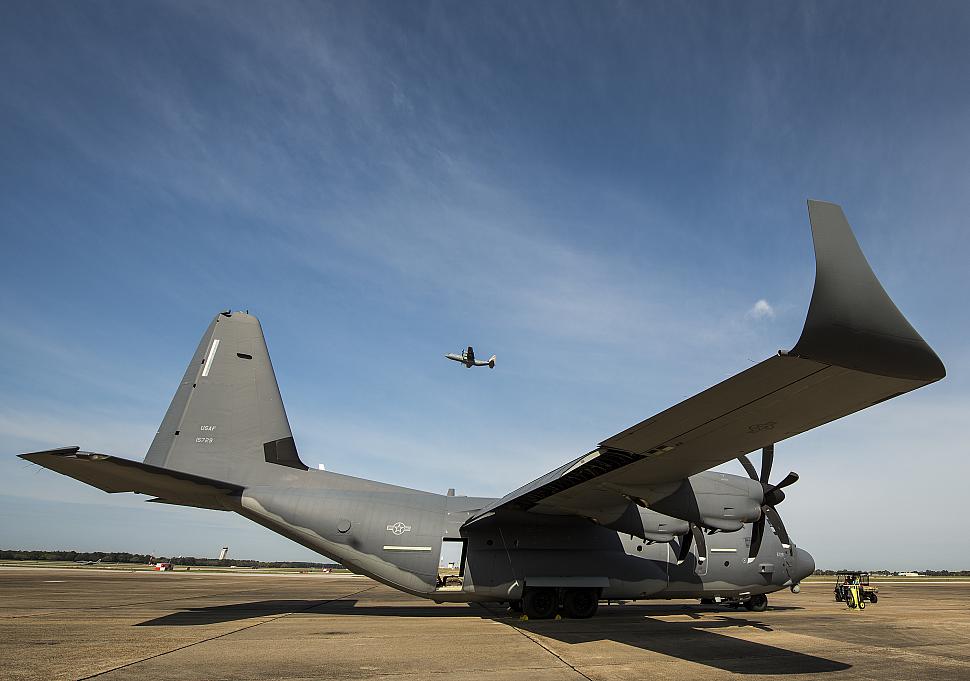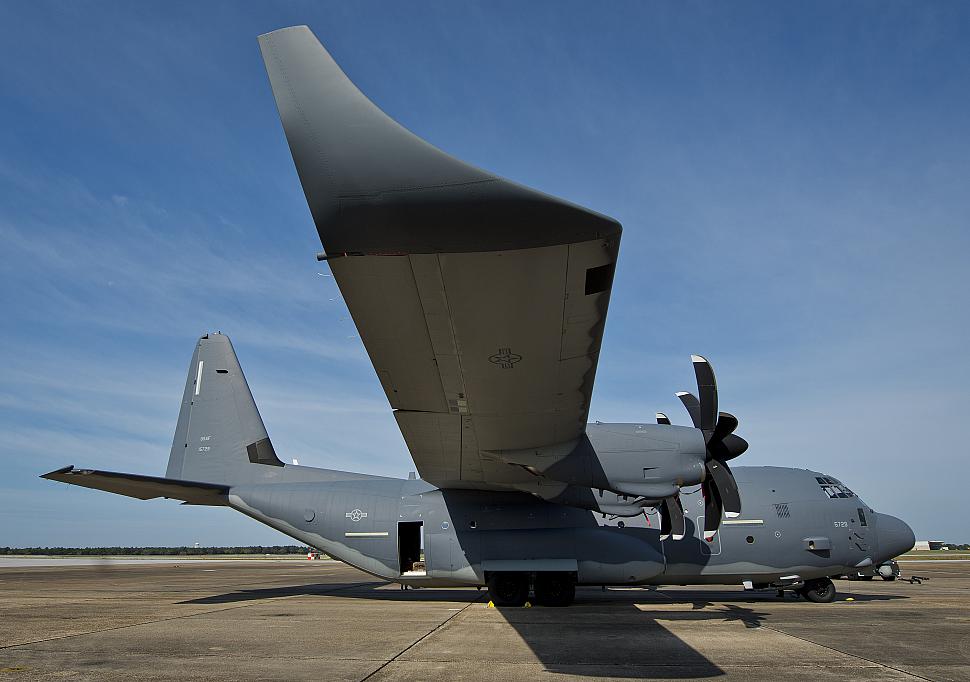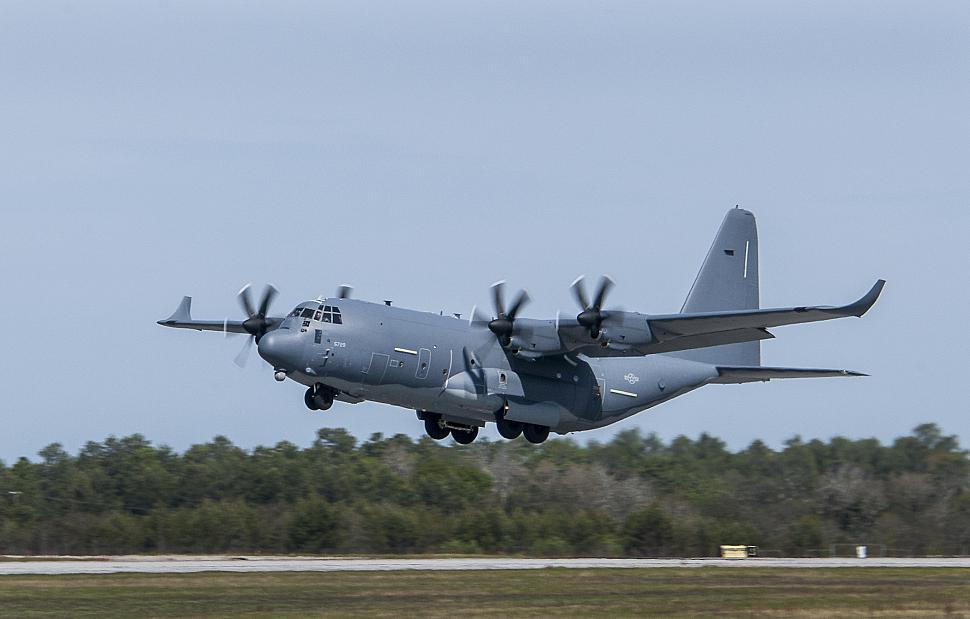MC-130J winglet testing - fuel efficiency
- F-16.net Editor

- Posts: 3083
- Joined: 23 Aug 2003, 12:02
New photos of MC-130J #11-5729 released showing the winglets being tested for Fuel Efficiency.



USAF MC-130J #11-5729 waits for its next mission as another C-130 lifts off above it at Eglin AFB. The test aircraft has been fitted with vertical fins on each wing, called winglets. The 413th FLTS aircrew and engineers tested the modified aircraft over eight flights. The goal of the tests was to collect data on possible fuel efficiency improvements and performance with the winglets and lift distribution control system installed. [USAF photo by Samuel King Jr.]

USAF MC-130J #11-5729 waits for its next mission as another C-130 lifts off above it at Eglin AFB. The test aircraft has been fitted with vertical fins on each wing, called winglets. The 413th FLTS aircrew and engineers tested the modified aircraft over eight flights. [USAF photo by Samuel King Jr.]
Asif Shamim
F-16.net Editorial staff & Patch Gallery Administration
F-16.net Editorial staff & Patch Gallery Administration
- Active Member

- Posts: 125
- Joined: 09 Jun 2015, 23:10
I agree ,it seems like this would have come along earlier in the program. The lift distribution system has my curiosity alerted. The winglets will alter the the lift distribution , which will cause more lift to be generated farther outboard. Any increase in lift at the tank 1 & 4 locations will increase the bending moment at the wing joint , "rainbow fittings" ( CWS 220.0 ,OWS 0.0 ). Perhaps an airspeed governed device such as aileron up rig ( like the C-5A )is in order.The final question that I have is perhaps this is why it wasn't tried before. If successful ,however,increased lift for the same power setting /TAS will always increase range.
- Active Member

- Posts: 125
- Joined: 09 Jun 2015, 23:10
The primary purpose of winglets is to prevent higher pressure air from under the wing from spilling over the wingtip into the lower pressure above the wing. This occurs on most airfoils and is the primary cause of wake turbulence in larger airplanes. Of course this situation reduces lift. Early methods of preventing this was the use of "Tip Tanks " (T-33 ) or other pods such as search lights ( P-2V ). The Navy installed such pods onto the wingtips of EC-130Q ( Tacamo ) aircraft , they were light weight and contained antennae. Since this became a permanent installation perhaps NAVAIR would have performance data on this configuration & it might be in the EC -130Q flight manual , NAVAIR O1-75GAE-1. This could provide a basis of comparison.
- Enthusiast

- Posts: 65
- Joined: 23 Mar 2015, 14:16
The primary purpose to drag reduction which in turn equates to increased fuel efficiency. At this point USAF's fuel bill is huge and they are considering any/all options for increase fuel efficiency as potentially viable. In this case, the winglets appear to provide very little savings but manage to garner interest.
Found a 2012 HOC presentation covering Winglets and Microvanes at
http://www.lockheedmartin.com/content/d ... 0Smith.pdf
Claims the following for winglets in the presentation:
- Fuel Efficiency Benefits
-- Estimate 1-3% Fuel Savings
- Increased Efficiency Requires Less Fuel for the Same Payload / Range Performance
-- 21 Gallons/Hour Reduction for C-130J Long-Range Payload Logistics Mission
- Increase Payload / Range Performance
-- 4% Increase in Range for C-130J
Found a 2012 HOC presentation covering Winglets and Microvanes at
http://www.lockheedmartin.com/content/d ... 0Smith.pdf
Claims the following for winglets in the presentation:
- Fuel Efficiency Benefits
-- Estimate 1-3% Fuel Savings
- Increased Efficiency Requires Less Fuel for the Same Payload / Range Performance
-- 21 Gallons/Hour Reduction for C-130J Long-Range Payload Logistics Mission
- Increase Payload / Range Performance
-- 4% Increase in Range for C-130J
- Active Member

- Posts: 125
- Joined: 09 Jun 2015, 23:10
Based on what I read from the HOC presentation , it seems that these fuel efficiency schemes present more problems than solutions. We seem to have a choice between Fuel efficiency (winglets) ,System complexity ( aileron up-rig ) or Fatigue life (winglets). Considering the small gain ,I have another recommendation ; A .Fly higher ,cruise at the best altitude for your gross weight and step climb as you burn off fuel B. Cruise at 290 KTAS adjusting for each step in the climb using TAS indicator , FMS system or OAT and E6B or equivalent. D. Hand fly each level-off on each "step " ensuring that the "ball" is centered and the plane is in the proper pitch attitude , then re-engage AFCS.Continue this as long as you can maintain a 9,000 ft cabin and ATC permits. You will notice a significant reduction in fuel flow at FL 290 & above.
6 posts
|Page 1 of 1
Who is online
Users browsing this forum: No registered users and 2 guests

